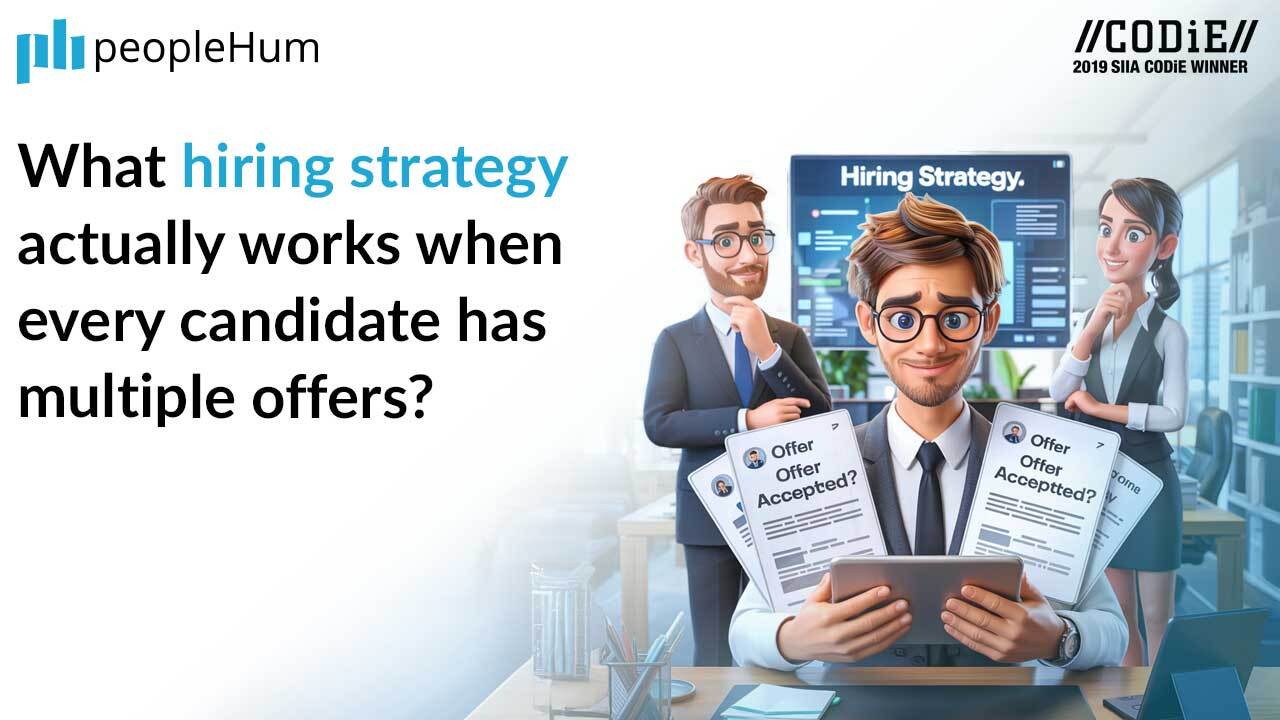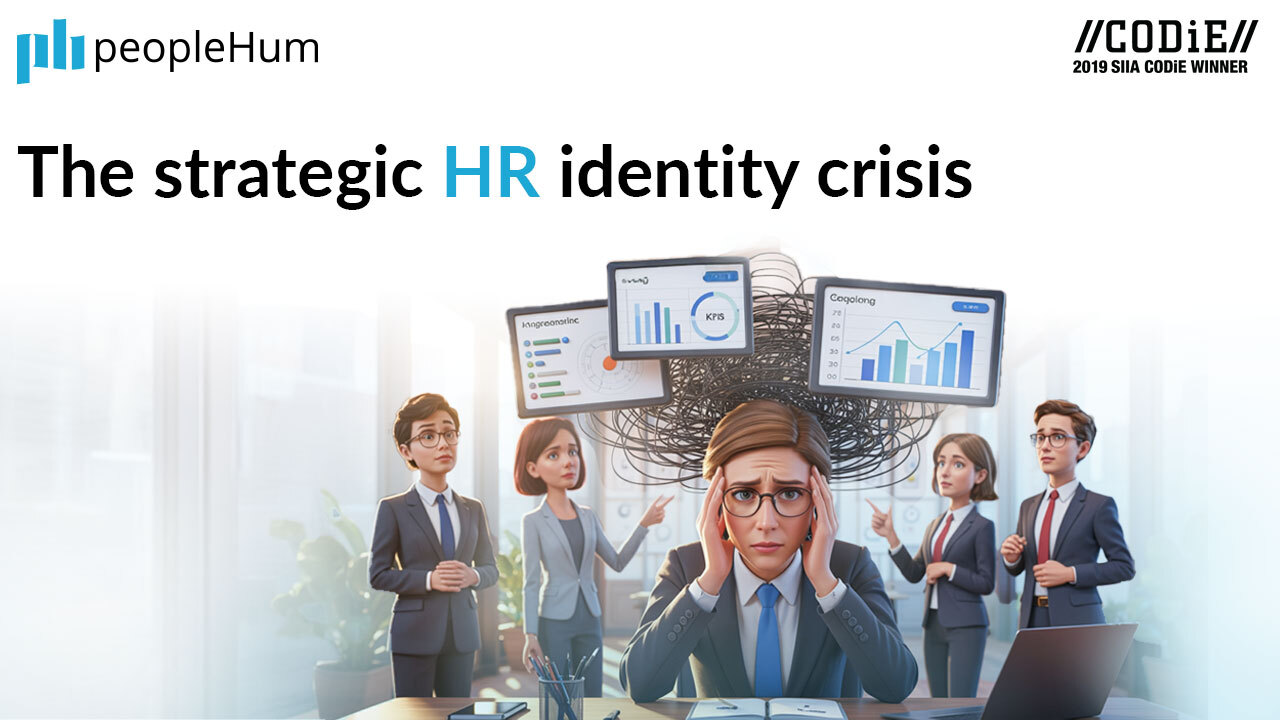If you’ve ever mapped out plans to optimise your manner of recruiting, managing payroll, building employee engagement and productivity, you’re in terms with the practices of what is today’s talk of the town, Human Capital management.
Human Capital Management (HCM) refers to the HR departments' typical administrative functions—recruiting, training, payroll, compensation, and performance management, leveraged into opportunities to enhance engagement, productivity, and business value.
Unlike a strict master, Human Capital Management is more than just rules and concepts; it is a collection of practices.
In an ever-changing business era like ours, the integration of Al in HR is greatly impactful in the rise and fall of businesses. This brings us to the first insight in our guide to managing human resources.
What is HCM software?
Human capital management software makes use of smart technologies such as artificial intelligence, machine learning, natural language processing (NLP), and deep learning to automate regular HR tasks and functions.
Recall the smart kid who not only won the race but also broke the record. The same goes with an Human Capital Management Software in regards to developing business value. HCM process not only focuses on strategic disciplines such as talent and employee engagement but also busting myths and stereotypes around the traditional HR functions. Surrounding HCM’s value, employees are viewed as assets to be invested in, and managed, to optimise the company value.
Also read : Disrupting human capital with artificial intelligence
Difference between HCM v/s HRMS v/s HRIS
Before you start questioning life amidst a jam of puzzling terms like HCM, HRMS and HRIS, take time to understand the difference between each of them.
HCM
In comparison, Human Capital Management is a broader term that conducts all the HR tasks, but mainly focuses on payroll, workforce rewards and compensation management.
HRMS
Human Resource Management System came into the picture as firms began to use highly complex software and automated operations to conduct their HR functions. It is now used as an interchangeable term with HRIS, for today’s HRIS can easily incorporate payroll functions of HCM.
HRIS
Human Resources Information System, as the name suggests, deals with in-depth data and information of employees and overall administration which is required of an HRMS/HCM platform to run.
Functions of an HCM
1. Workforce management
While the ancient punch-in time clock became an outdated system, HCM strategies of workforce management emerged with a set of automated functions:
- Time and attendance management
- Labour and meeting scheduling
- Security and biometrics
- Mapping & rolling out compensation
- Tracking and implementing salaries/incentives.
- Workforce planning
- Budgeting
2. Talent acquisition
Human Capital Management looks at talent management from a strategic perspective throughout the talent lifecycle. It entails automation of the following processes:
- Candidate Sourcing
- Candidate Screening
- Application Tracking System (ATS)
- Onboarding
- Talent review
- Succession planning
3. Employee engagement
To generate business results, benefits of HCM include developing deeper relationships with employees while assisting them, on both, personal and professional matters. Such employee engagement is achieved by an Human Management Software through:
- Recognition and awards
- Employee Surveys
- Grievance feedback and resolution
4. Performance management & optimization
Aligning employee’s individual and business goals is the heart of a company’s performance management system. HCM process looks over these aspects by offering modules for:
- Setting goals and objectives
- Tracking work progress
- Learning and development (L&D)
- Internal communication
Also read : The Modern Guide to Performance Management Process
5. Analytics
Cloud-based HCM system gathers and interprets human resources data into exceptional insights that can be brought into execution to enhance an organisation’s performance. Businesses may eliminate the confusion and recognise what strategies are working and what isn’t by applying people analytics.
Benefits of an effective cloud-based HCM software
Employers and business leaders have come to realise the urgency and value of the two sisters, employee engagement and performance management. What an Human Capital Management software offers, has more or less started concerning the business managers and leaders.
An article published on Forbes by the author Jeanne Meister discusses how HR directors will need to start experimenting with all the aspects of AI to provide greater value to their firms. HR leaders, according to her, are beginning to test AI by employing chatbots for recruiting, employee services, employee development, and learning & development.
1. No more juggling between the squeaky wheels of spreadsheets
The possibility that data in spreadsheets might be lost or altered is a big-time issue. A spreadsheet that is shared or emailed rarely has “live” or “real-time” information.
In another story, spreadsheets are nail-biting and tough to understand, especially for non-technical users. Worse, the large amount of data offered might result in misinterpretation, and your team might make poor decisions as a result of that misunderstanding. This points us towards the next benefit of HCM.
2. Decisions based on data & analytics, not on your gut
In the past, a lot of HR data was either discarded or used to create charts and tables for performance reports and so. While in today’s age of big data and analytics, businesses are using their data to gain insights about where to find the best applicants, how to spot and attract those individuals, and how to keep them satisfied after they start working for them.
HR departments may use this data to make better HR decisions, improve leadership, streamline HR procedures, and promote employee productivity and well-being. All of this can have a significant impact on a company's capacity to achieve its strategic goals, which gives us a clear view of importance of HCM.
3. Priority to strategic planning over time-consuming manual efforts
Many HR departments spend the majority of their time on administrative activities or legal matters. Staff appraisals, the day-to-day tedium of recruitment, people management, and needless, costly activities like quarterly employee satisfaction surveys consume time that may be better spent elsewhere.
Quite often, HR departments function in a vacuum, detached from top management's discussions and decisions. HR's capacity to support strategic business results is hampered as a result of this misalignment with the rest of the company.
With the integration of the HCM platform, HR as a strategic partner can make a significant difference in both HR and overall business performance.
4. End-to-end HR functions at your fingertips
While most of us don’t prefer things to be scattered, a cloud HCM application can perform all the HR functions in one integrated view. According to a recent report on HR Director, a unified work culture increased employee performance by 56 per cent while lowering the chance of turnover by 50 per cent. HCM software help improve these employee connections that are fostered and facilitated by HR functions.
5. Winning best talent in a challenging and diverse job market
Recruitment, in general, can quietly make HR specialists break a sweat. Hiring urgent roles or closing higher management, especially, come with a certain kind of stress and pressure.
This can be dealt by an Human Capital Management software that supports automation of the recruiting, onboarding and other HR functions like candidate sourcing and screening, as well as employee training to help acquire the best talent in the job market.
6. Performance management wins the race, too
HCM software has the advantage of offering effective tools for providing information that is tailored to the needs and preferences of users. HR managers can capture performance results and identify areas for improvement during feedback by using customised performance profiles.
Cloud-based Human Capital Management software additionally provides employee self-service function, which gives employees online access to their personal information, such as on-demand training, performance goals, and reviews.
You might also like : The Modern Guide to Performance Management Process
Why an HCM matters for your business
Organisations now rely on people to make profits, and as known for ages, people drive the heart of a business. And so, HCM processes are not only critical to an organization's performance, but they should also be a part of the entire strategic plan.
A report on Oracle states that 79% of HR leaders believe that refusing to implement AI will negatively affect their organization's overall performance; nevertheless, just 6% of HR specialists are actively adopting Al systems. A good place to start would be brainstorming HR goals, values, and priorities.
As an end-to-end HCM solution, PeopleHum, the winner of San Francisco Codie Awards 2019, offers a one-view integration with its Al-driven tools like employee engagement, recruitment, performance management, HR analytics, learning and development (L&D), core HR, among the others.

As per Gartner’s research, “organisational design and change management” was the second-most critical issue for HR leaders in 2021.
Keeping change management in mind, peopleHum benefits its users by offering ease of use, multi-device support, tools to motivate and engage employees on regular basis, while also creating a learning culture with clear metrics for individual and team progress.
Coming to the end of our human capital management guide, a cloud-based HCM platform, quite naturally, will not be integrated into the fabric of the firm until adequate change management is implemented. peopleHum, with its people-centric approach, minimises the concerns of its customers to create a solution that reduces friction and better prepares your company for the future of work.































.webp)





%20(1).webp)












